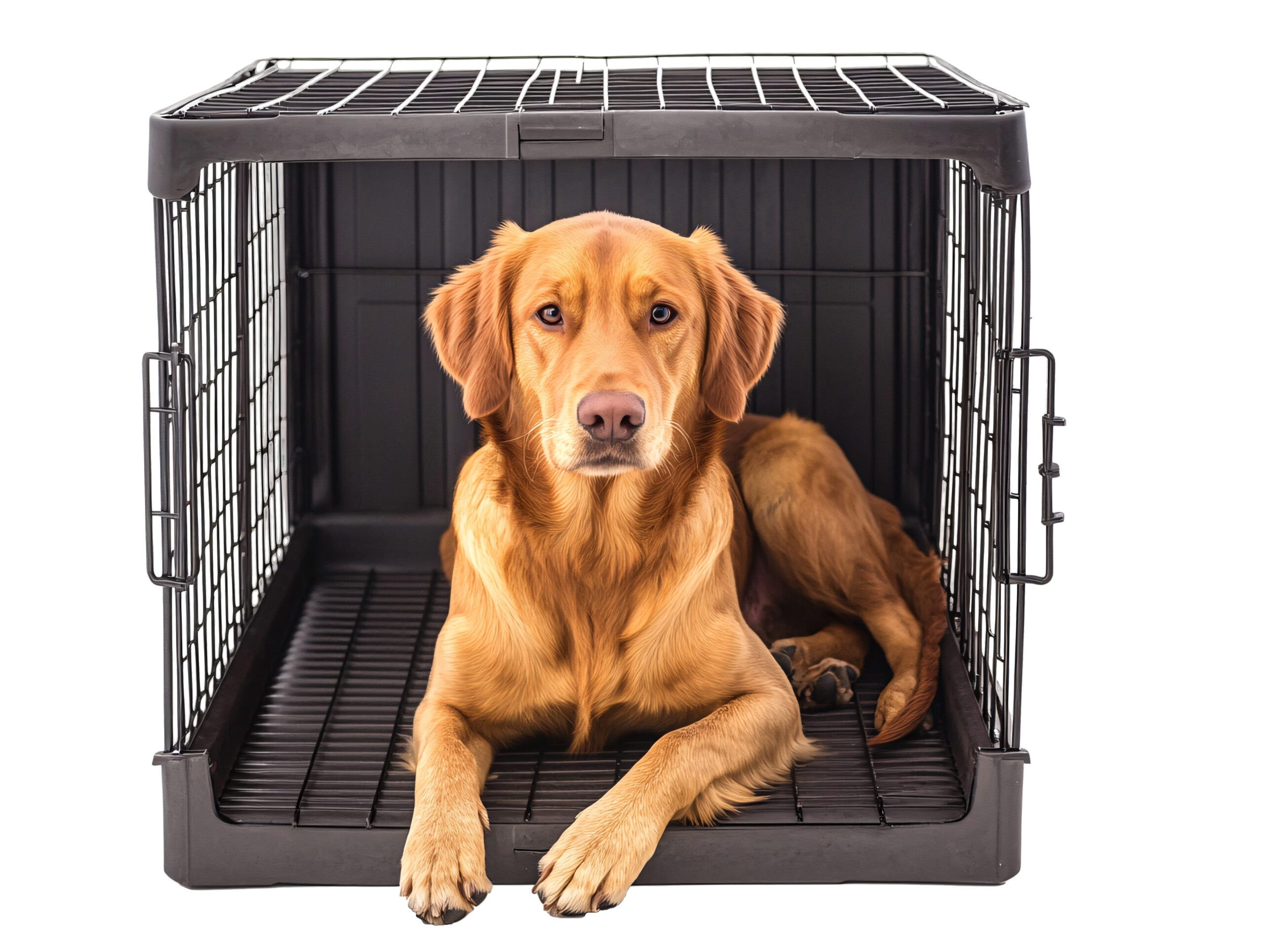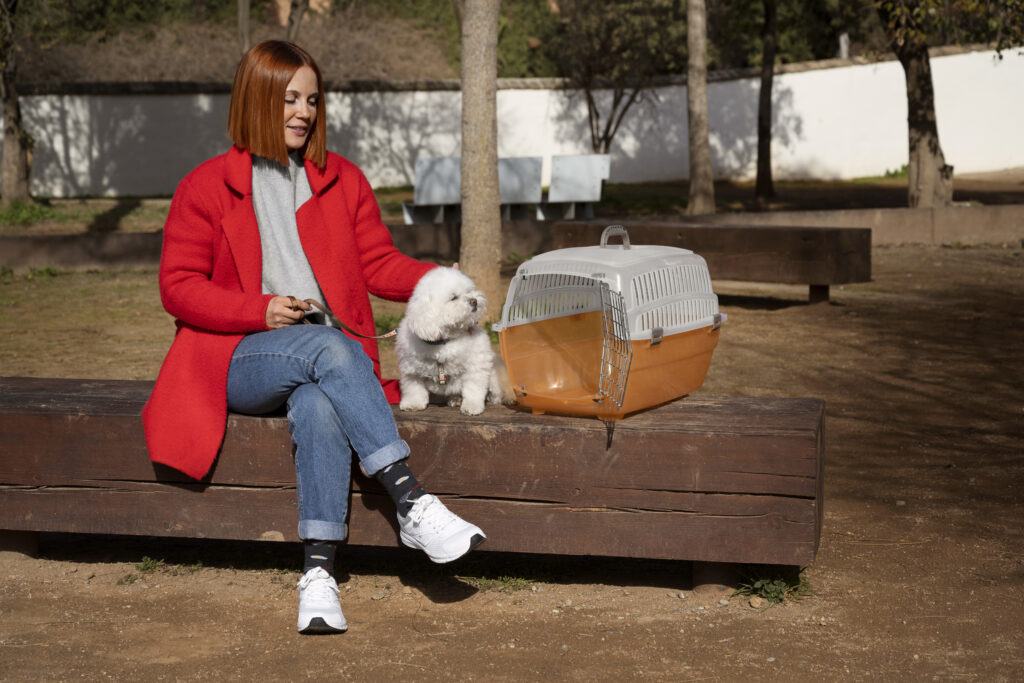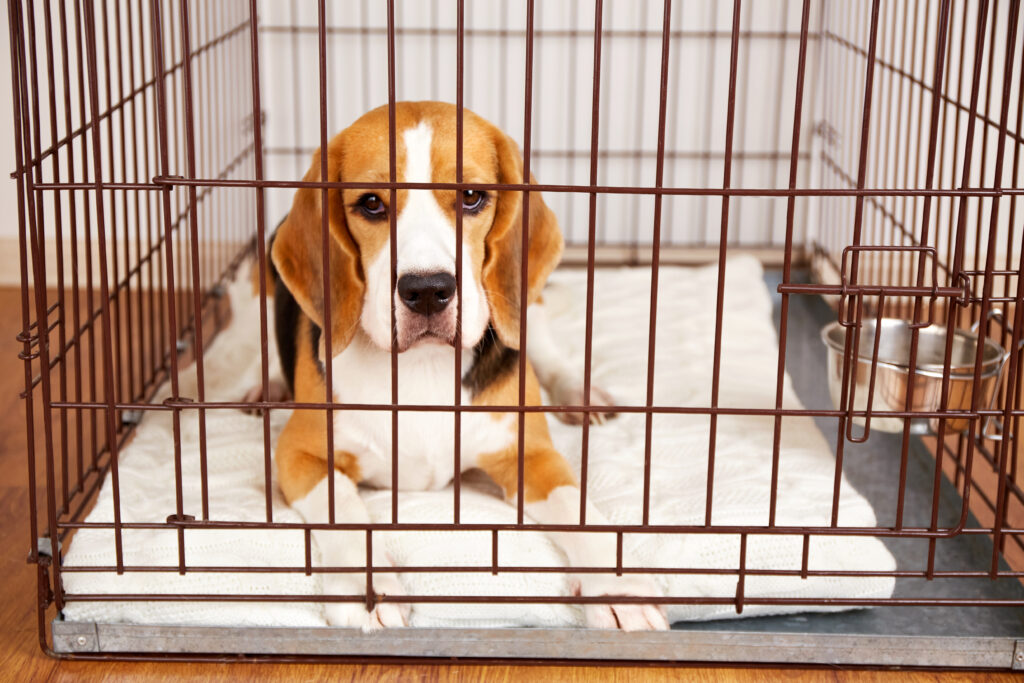
“Crate training can be a game-changer for dogs with separation anxiety, offering them a secure, cozy space that feels safe even when you’re away. However, traditional crate training methods may not work for dogs struggling with intense anxiety. Whether your dog demonstrates signs of separation anxiety like barking, destructive behavior, or excessive whining, learning how to crate train a dog with separation anxiety can help provide comfort while reducing stress.
This guide will help you understand separation anxiety, prepare for crate training, and execute a step-by-step plan to help your dog feel calm and secure in its crate. With expert tips and actionable advice, you’ll have everything you need to create a safe space for your pup.
What is separation anxiety?
Separation anxiety occurs when a dog becomes distressed when left alone or separated from loved ones. It’s common in dogs and can manifest in various ways, including behavioral issues or emotional distress.
Signs of Separation Anxiety in Dogs
Be on the lookout for these symptoms to identify separation anxiety in your dog:
- Excessive barking or howling when left alone
- Destructive chewing or scratching of furniture and doors
- Pacing or restless behavior
- Accidents indoors, despite being house-trained
- Drooling, trembling, or other signs of stress
How Separation Anxiety Impacts Dogs
Separation anxiety goes beyond simple misbehavior. Dogs with separation anxiety often feel fear or panic when left alone. This emotional state can affect their happiness, health, and trust in their environment.
Adapting Crate Training for Anxiety
Traditional crate training focuses on the crate as a place of routine. However, anxious dogs need a more gradual, patient approach to avoid increasing their distress.
Preparing for Crate Training
Setting the stage correctly before jumping into training sessions can make the process smoother.
Choose the Right Crate

The size and material of the crate matter:
- Size: Your dog should comfortably stand, turn, and lie down in its crate, which shouldn’t feel too spacious or restrictive.
- Material: Some dogs prefer enclosed plastic crates for security, while others feel less trapped in open-wire crates.
- Comfort: Add soft blankets and padding to make it cozy.
Create a Calming Environment
Place the crate in a quiet, low-traffic area where your dog won’t be disturbed. Adding soft lighting, calming music, or aromatherapy (like lavender or dog-safe essential oils) can create a soothing atmosphere.
Gradual Introduction
Introduce the crate slowly by leaving the door open and letting your dog explore it independently. Toss in some treats or toys to make the crate a positive and inviting place.
Step-by-Step Guide to Crate Training a Dog with Separation Anxiety

Step 1: Start with Short Sessions
Begin with very brief crate sessions—just a minute or two at a time. Please close the door while you’re nearby and open it again before anxiety sets in. These short bursts build trust and minimize negative associations.
Step 2: Positive Reinforcement
Reward your dog for calm behavior in the crate. Use praise, treats, or their favorite toy as a reward. The goal is to create a positive connection between your dog and their crate.
Step 3: Gradual Increase in Time
Slowly increase the amount of time your dog spends in the crate. Only extend the time if your dog appears calm and comfortable. Too much, too fast, can overwhelm your dog and undo progress.
Step 4: Introduce Comfort Items
Familiar scents can help soothe your dog in the crate. To make the space feel even safer, add an old T-shirt with your scent, their favorite soft toy, or a calming blanket.
Step 5: Avoid Negative Associations
Never use the crate as a form of punishment. Your dog should see the crate as a safe space, not a source of fear or reprimand.
Common Mistakes to Avoid During Crate Training
- Rushing the Process
Trying to fast-track crate training can backfire. Ensure your dog fully acclimates before leaving them for long periods.
- Punishment for Crying
If your dog whines or barks in the crate, avoid scolding them. The goal is to reduce stress—not add to it.
- Leaving for Too Long
Even a well-trained dog shouldn’t be in a crate for excessively long periods. Balance crate time with breaks for exercise and bathroom needs.
Additional Tips for Managing Separation Anxiety
Physical and Mental Stimulation
A tired dog is often a calmer dog. To expend excess energy before crate time, engage your pup in playtime, a brisk walk, or puzzle toys.
Use Calming Aids
Pheromone diffusers, anxiety wraps (like a ThunderShirt), or natural calming supplements can help reduce their stress. Consult your veterinarian for suggestions.
Low-Key Departures and Returns
When leaving the house, keep goodbyes casual to avoid triggering anxiety. Similarly, when you return home, wait a few minutes before greeting your dog. This helps them understand that arrivals and departures are no big deal.
FAQ (Frequently Asked Questions)
1. Can crate training help with separation anxiety?
Yes, crate training can be a powerful tool for helping dogs with separation anxiety. A properly introduced crate offers a safe, secure space that makes your dog feel protected when alone. However, for dogs with intense anxiety, crate training must be done slowly and carefully to avoid increasing stress. The key is to create positive associations with the crate through gradual introductions, comfort items, and rewards.
2. How long does it take to crate train a dog with separation anxiety?
The time it takes to crate train a dog with separation anxiety varies depending on the dog’s personality and the severity of their anxiety. While some dogs may feel comfortable within a few weeks, others may need several months of consistent, patient training. It’s important not to rush the process—taking small, positive steps will help your dog build trust and feel secure in their crate over time.
3. What should I do if my dog cries or barks in the crate due to separation anxiety?
If your dog cries or barks in the crate, avoid scolding or punishing them, as this can increase anxiety. Instead, focus on positive reinforcement when they are calm and consider shortening crate time until they are more comfortable. Adding comfort items like a blanket with your scent, using calming aids, and ensuring your dog has had enough physical and mental exercise can also reduce stress. Always aim to make the crate a safe and positive space, not a punishment.
Helping Your Dog Build Confidence
By following the steps above and remaining patient, your dog is up for success. With time and consistency, their crate will transform into a sanctuary—a space they love rather than fear. Crate training with separation anxiety may require extra effort, but the results are worth it when your dog is happy, secure, and calm.


